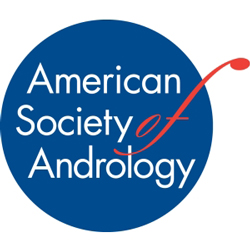Michael A. Palladino, Ph.D., Vice Provost for Graduate Studies and biology professor, is currently working on a project for the American Society of Andrology (ASA) which will result in new strategic communication plans and an app to be used at the ASA’s annual conference in April.
Palladino and a team of graduate assistants are working on three fronts to ensure the project’s success.
“The ASA recently completed a strategic plan and needs to take an objective look forward to continue as a strong organization,” Palladino said. “All research organizations are competing for members, given the funding climate for science and limited travle budget. To keep ASA unqiue as a meeting where physicians and scientists interact is the goal.”
Eugene Simko, associate professor of management and decision sciences, and MBA student Matthew Sheehan are collaborating with the ASA to establish a strategic plan for the organization.
Alexis Nulle, a specialty professor of communication, and Marina Vujnovic, Director of the Corporate and Public Communication (CPC) MA program and associate professor of communication, are working with CPC student Emily Sakowski to develop a Strengths, Weaknesses, Opportunities, and Threats (SWOT) analysis, as well as a communication plan that will particularly focus on social media platforms.
“From SWOT analysis, the ASA will analyze where it does well, and where it can improve relative to other organizations and then develop strategies to move forward,” Palladino said. “This will include plans for membership, fundraising, planning the conference, etc. The Society needs to do a better job of connecting with students and young scientists, as well as the public, so here is where social media and marketing will be relevant.”
Jiacun Wang, Ph.D., a professor of computer science and software engineering, is working with graduate student Li Cheng in developing the app itself. Li is from the Changshu Institute of Science and Technology (CIT) in China, which Palladino referred to as a “partner school.”
“Li developed an interactive app on the Android platform to be used by participants at the upcoming ASA meeting in Portland in April,” Palladino said. “The app will allow conference attendees to see the full program on their devices, build a calendar of events to attend, form networks for collaboration, etc. This is the first time the conference will have an app.”
According to Palladino, the app will be a “great way” for conference attendees to plan their schedules, network with one another, and connect to ASA social media channels to learn more about the society and the conference. The app can also be used for physicians and scientists so that they can connect with each other for research collaborations.
Palladino, who is a former member of the ASA executive board, came to the society with this idea. This project that will culminate in April, hopes to assist people who will be at their Annual Conference. Typically, approximately 350 people attend the conference, more than half of the 600 registered members of the society.
“The ASA hosts an Annual Scientific Conference which attracts a diverse group of meeting participants from all disciplines and settings within the field of Andrology, including significant numbers of trainees, with inclusion of women, minorities, and people with disabilities,” said Donna Rostamian, the Executive Director of the Headquarter Office for the ASA. “The Program Committee is charged with selecting speakers and session chairs reflecting the breadth of the field. The Annual Meeting program also features events specifically supporting women, trainees, and those underrepresented in science and medicine. Through the AndrologyAmerica.org website, collaborative work from the andrology community can be searched in the hopes of encouraging collaboration and translational research in the field of Andrology and Men’s Health.”
“The ASA is a global, multidisciplinary professional society dedicated to the science of men’s health,” said Rostamian. “The ASA seeks to be an international leader in the promotion, education, and discovery in the field of male reproductive health by nurturing the careers, expertise and ideas of diverse stakeholders in andrology, including scientists and clinicians; and by informing the public.”
“This project is a great example of how we can put our talented graduate students to work on a Graduate Assistantship project that is win-win. The students gain practical expereince working with a national professional society under supervision of our faculty, and these are resume-building experiences,” Palladino said. “The ASA gains valuable insight into strategic planning from unbiased eyes, creation of a plan for marketing and communications, and an app. The ASA benefits from talented graduate students providing a significant body of work that would be difficult for the society to afford.”
Palladino anticipates that the project will continue in the future with Univeristy professors and gradate assistants helping define a strategic plan and implement a social media strategy, as well as refining the app and creating an iOS-compatible version.
IMAGE TAKEN from the ASA website



